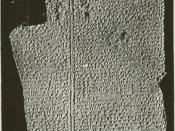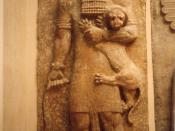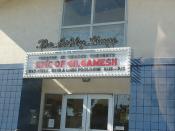The Babylonian epic of Gilgamesh dates back more than 3800 years ago through spoken word until poets began inscribing it later for future reference. It is one of the greatest pieces of literature from the ancient civilizations of Mesopotamia known to modern scholars and features what is probably the world's first human hero in literature. In analyzing this ancient text, it is not difficult to find language or structural devices that reflect the culture that it was composed from. The epic, especially section three, applies such literary devices as diction, cultural references, repetition and sentence structure to compose a truly historical epic that brilliantly represents its ancient culture through the story.
Diction and vocabulary utilized in this story clearly indicate that the language used in the story is unfamiliar to most readers and is most likely foreign. Even the name of the epic?s main character is a unique name that can only be associated with the ancient hero.
During the ordeal of Enkidu?s death, spiritual references are plentiful with references to the Sun God, the Bull of Heaven, and the Underworld. During ancient times, there was no prevalent, single religion and there was an abundance of gods for every aspect of life. Such gods mentioned like Tammuz, God of vegetation represent an important reference to agriculture and its importance to the Babylonians. The third section is also interesting in that it even features rituals that Gilgamesh practiced after the death of his beloved friend Enkidu. There are also other allusions to geographical locations, especially the Euphrates River, a lifeline of the Fertile Crescent mentioned in the third section multiple times. Another reference includes Uruk, the city Gilgamesh rules over, which is presently located in Iraq.
Gilgamesh is an ancient oral poem that was later organized by the people...


